EDIT
Blending brush -> layer -> background
OK, what's happening is glBlendFunc(GL_SRC_ALPHA, GL_ONE_MINUS_SRC_ALPHA) is working for blending the brush strokes into the brush texture, but the resulting alpha values in the texture are wrong. Each added fragment needs to 1. add it's alpha to the final alpha value - it has to remove exactly that much light for the interaction and 2. scale the previous alpha by the remainder - previous surfaces reduce the light by the previous value, but since a new surface is added there is less light for them to reduce. I'm not sure if that made sense but it leads to this...
glBlendFuncSeparate(GL_SRC_ALPHA, GL_ONE_MINUS_SRC_ALPHA,
GL_ONE, GL_ONE_MINUS_SRC_ALPHA);
Now the colour channel of the brush texture contains the total colour to be blended with the background (pre-multiplied with alpha) and the alpha channel gives the weight (or the amount the colour obscures the background). Since the colour is pre-multiplied with alpha, the default RenderTexture blending GL_SRC_ALPHA, GL_ONE_MINUS_SRC_ALPHA scales with alpha again and hence darkens the overall colour. You now need to blend the brush texture with the background using the following function, which I gather must be set in Cocos2D:
glBlendFunc(GL_ONE, GL_ONE_MINUS_SRC_ALPHA);
Hopefully this is possible. I haven't given a lot of thought on how to manage the possibility of setting up the brush texture to blend with GL_SRC_ALPHA, GL_ONE_MINUS_SRC_ALPHA but it may require a floating point texture and/or an extra pass to divide/normalize the alpha, which sounds painful.
Alternatively, splat the background into your render texture before drawing and keep the lot there without any blending of layers.
This worked for me:
glDisable(GL_DEPTH_TEST);
glClear(GL_COLOR_BUFFER_BIT);
glEnable(GL_TEXTURE_2D);
glEnable(GL_BLEND);
fbo.bind();
glClear(GL_COLOR_BUFFER_BIT);
glBlendFuncSeparate(GL_SRC_ALPHA, GL_ONE_MINUS_SRC_ALPHA,
GL_ONE, GL_ONE_MINUS_SRC_ALPHA);
drawTexture(brush1);
drawTexture(brush2);
fbo.unbind();
drawTexture(grassTex); //tex alpha is 1.0, so blending doesn't affect background
glBlendFunc(GL_ONE, GL_ONE_MINUS_SRC_ALPHA);
drawTexture(fbo.getColour(0)); //blend in the brush layer

Brush layer opacity
Using GL_ONE, GL_ONE_MINUS_SRC_ALPHA causes issues with the library's implementation of opacity in layer blending since it assumes the colour is multiplied by alpha. By reducing the opacity value, the alpha of the brush layer is scaled down during blending. GL_ONE_MINUS_SRC_ALPHA then causes the amount of background colour to increase, however GL_ONE sums 100% of the brush layer and oversaturates the image.
The simplest solution imo is to find a way to scale down the colour by the global layer opacity yourself and continue to use GL_ONE, GL_ONE_MINUS_SRC_ALPHA.
- Actually using
GL_CONSTANT_COLOR, GL_ONE_MINUS_SRC_ALPHA might be an answer if the library supported it, but apparently it doesn't.
- You could use fixed pipeline rendering to scale the colour:
glColor4f(opacity, opacity, opacity, opacity), but this will require a second render target and doing the blend manually, similarly to the code above, where you draw a full screen quad once for the background and again for the brush layer.
- If you're doing the blend manually it would be more robust to use a fragment shader instead of the
glColor method. This would allow far greater control if you ever wanted to play with more complex blending functions, especially where divisions and temporaries outside the 0 to 1 range are concerned:
gl_FragColour = texture(brushTexture, coord) * layerOpacity;
END EDIT
The standard alpha blending function is glBlendFunc(GL_SRC_ALPHA, GL_ONE_MINUS_SRC_ALPHA);, not quite the GL "initial"/default function.
Summing alpha values as you do in glBlendFuncSeparate will oversaturate alpha and the underneath colour is completely replaced. Saturation blending may give decent results: glBlendFunc(GL_SRC_ALPHA_SATURATE, GL_ONE). It might also be worth experimenting with glBlendEquationSeparate and MAX blending, if it's supported. The advantage of playing with MAX would be reducing the overlapping artefacts (hard triangular bits) from your line drawing code - eg replace colour, but only until total alpha value X is reached. EDIT: Both cases will require blending and clearing after each stroke.
I can only assume blending the render texture onto the background is in fact working. (not for the current layer values)
On a side note and largely unrelated there's also "Under Blending", where you keep a transmittance value instead of alpha/opacity (from here):
glBlendEquation(GL_FUNC_ADD);
glBlendFuncSeparate(GL_DST_ALPHA, GL_ONE, GL_ZERO, GL_ONE_MINUS_SRC_ALPHA);



